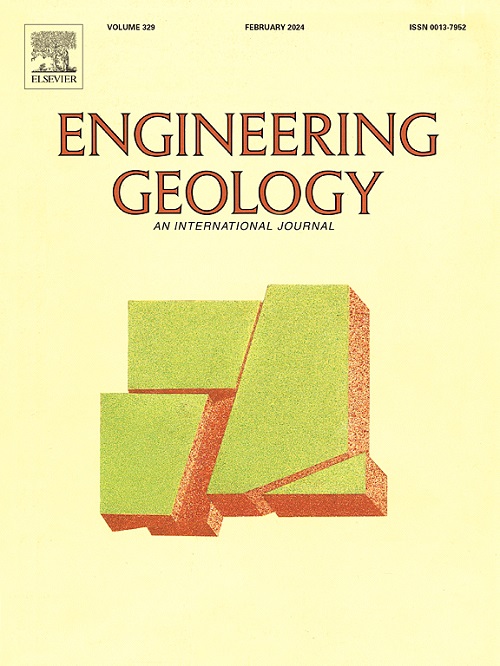Temperature anomaly as an indicator of groundwater flow prior to the shaft sinking with the use of artificial ground freezing
IF 6.9
1区 工程技术
Q1 ENGINEERING, GEOLOGICAL
引用次数: 0
Abstract
The study aimed to evaluate hydrogeological conditions for shaft sinking using artificial ground freezing in complex geological formations of the Upper Silesian Coal Basin (USCB) in Poland. Temperature logging was conducted to a depth of 460 m in five boreholes positioned around the freezing cylinder and four boreholes along the radius extending beyond the freezing cylinder. An effective borehole temperature acquisition system was created using autonomous sensors. A novel approach was developed for the quantitative assessment of temperature anomalies, enhancing data processing and interpretation. Two types of temperature anomalies–negative and positive–have been defined related to groundwater convection. The locations of temperature anomalies strongly correlate with the hydrogeological and lithological data obtained at the stage of preliminary geological recognition. Negative anomalies indicated increased temperature in aquifers, including fractured and tectonically disturbed zones. Positive anomalies indicated decreased temperature in zones of poorly permeable rocks. The study revealed that temperature anomalies not influenced by the geothermal gradient are almost half the size of those influenced by the geothermal gradient. The findings provide more effective insights into the applications of borehole temperature measurements to better monitor the freezing process. In the stage of shaft sinking, the research contributed to modifying the freezing technology and strengthening the shaft lining.
求助全文
约1分钟内获得全文
求助全文
来源期刊

Engineering Geology
地学-地球科学综合
CiteScore
13.70
自引率
12.20%
发文量
327
审稿时长
5.6 months
期刊介绍:
Engineering Geology, an international interdisciplinary journal, serves as a bridge between earth sciences and engineering, focusing on geological and geotechnical engineering. It welcomes studies with relevance to engineering, environmental concerns, and safety, catering to engineering geologists with backgrounds in geology or civil/mining engineering. Topics include applied geomorphology, structural geology, geophysics, geochemistry, environmental geology, hydrogeology, land use planning, natural hazards, remote sensing, soil and rock mechanics, and applied geotechnical engineering. The journal provides a platform for research at the intersection of geology and engineering disciplines.
 求助内容:
求助内容: 应助结果提醒方式:
应助结果提醒方式:


